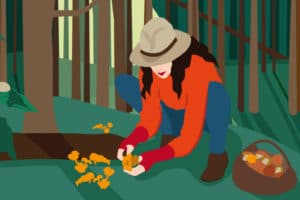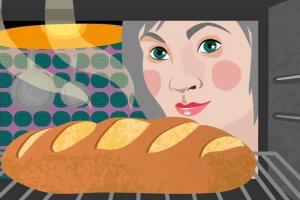Strictly Vegan: The Temple Cuisine
It’s local, organic, vegan and seasonal. But most of all ‘a route to enlightenment’, good to prevent age-related health problems as low in cholesterol.
Korean temple food, traditionally made by Buddhist nuns, has been practising what we now call the farm-to-table concept, using ingredients that are only homegrown or naturally cultivated, combined with an eco-friendly, clean eating mindfulness with a history of over 1700 years. At its heart, it is locavore vegan cuisine, a pure plant-based virtuosity, but it goes even one step further. Korean temple cuisine is made without meat, fish, dairy (except for milk) or even garlic or onions (which are believed to incite anger when raw and arouse libido when cooked), but don’t worry flavours are precisely crafted by a thorough understanding of the ingredients and their natural aromas.
From a Westerner’s perspective, Jeong Kwan would probably come to mind as the leading authority in temple food, as she featured in the Netflix series “Chef’s Table.” But within Korea, however, Buddhist nun Wookwan is even better known as a temple food guru and now she is out with her cookbook written in English: “Wookwan’s Korean Temple Food: The Road to the Taste of Enlightenment” which is the first of its kind introducing temple cuisine.
We use a lot of lotus in temple food – said Wookwan-. It’s symbolic. Just like a lotus flower remains clean even if it grows in the mud, we believe the core nature of a human is always set apart from the masses even if we live together. We also like to eat noodles, probably because we need gluten that we don’t get from eating meat.
Temple cuisine holds at its very core a reverence for life and Wookwan’s 41 meticulous recipes embody her philosophy and conscientiousness for nourishing the not only the body but the soul. Techniques such as fermentation and creating natural extracts and broths are included in this cookbook, as well as ways to substitute ingredients that are more readily found to recreate the very flavours of the Dorak Mountains, where she comes from, right at home.
Eating is not just about filling the stomach – she said-. It’s about what kind of mindset you have while eating. As preparers, we forage ingredients while communicating with nature, and cook and eat them with gratitude. We practice this with hope to brighten the world.
One of the main elements of Temple Cuisine is time itself. Through pickling, fermenting, dehydrating and other traditional practices, the nuns infuse their simple food with dizzying layers of flavour. The various nutritive elements produced through fermentation also lower the level of cholesterol, have cancer-inhibiting qualities and guard the human body from many age-related illnesses.
Traditional temple foods include lotus leaf rice and steamed lotus root dish with soybean paste, porridge made with jujube and milk, stir-fried burdock, root pancakes and noodles made with vegetables, fermented radishes, marinated tofu, crispy greens, squash and green tea.
It’s also a very seasonal cuisine. Nuns advise eating cold and sweet food in the fall, during which the body is recovering from the heat during the summer. In addition, they recommended eating smooth, sour and salty food in the summer as the body sweats a lot; spicy, salty, sour and sweet food in the winter and bitter and sour food in the spring to strengthen the bronchial tubes.
In the end, what we can learn from them? As diners, they teach us to appreciate food. “Eating meditation” forces us to slow down and enjoy each bite, pouring mindfulness and compassion in what we do as the best sauce in the world is the heart that we put into our cooking.





